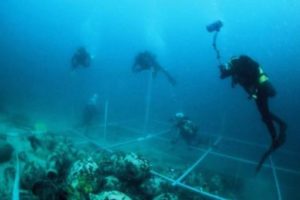PARIS, France — A shipwreck found off northern Haiti could not be the Santa Maria, the flagship of Christopher Columbus’ first crossing of the Atlantic, the United Nations cultural agency reported Monday.
“There is now incontestable proof that the wreck is from a much later period,” said a report from the U.N. Educational, Scientific and Cultural Organization (UNESCO).
The bronze or copper fasteners found on the site, near the Coque Vieille Reef, point to shipbuilding techniques of the late 17th or 18th centuries, when ships were sheathed in copper. The Santa Maria, which ran aground on the night of Dec. 24 to 25, 1492, would have used only iron or wood fasteners.
Moreover, in view of contemporary accounts – notably the journal of Columbus, transcribed by Bartolome de las Casas – the wreck is too far from the shore to be that of the Santa Maria.
The report was drafted by UNESCO mission leader Xavier Nieto Prieto, whose team visited Cap Haitien, north of the island, between Sept. 9 and 14. He was joined by Tatiana Villega of UNESCO’s Office in Haiti, Kenrick Demesvar of the Haitian ministry of culture and Maksaen Denis of Haiti’s National Bureau of Ethnology.
In a letter dated June 12, Haitian Culture Minister Monique Rocourt asked for the support of the Scientific and Technical Advisory Body of UNESCO’s 2001 Convention on the Protection of Underwater Cultural Heritage, requesting that a mission of experts be sent to the site.
The letter followed an announcement in May that Bill Clifford, an American underwater explorer, had located the wreck of the “Santa Maria.” He first visited the site in 2003 and identified a cannon believed to date from the 15th century. The cannon has since disappeared.
Read more: caribbeannewsnow.com



